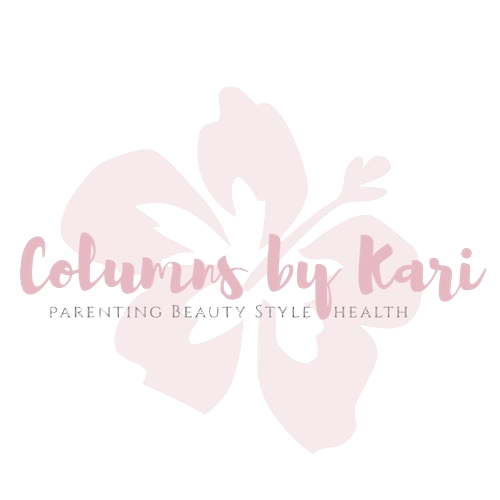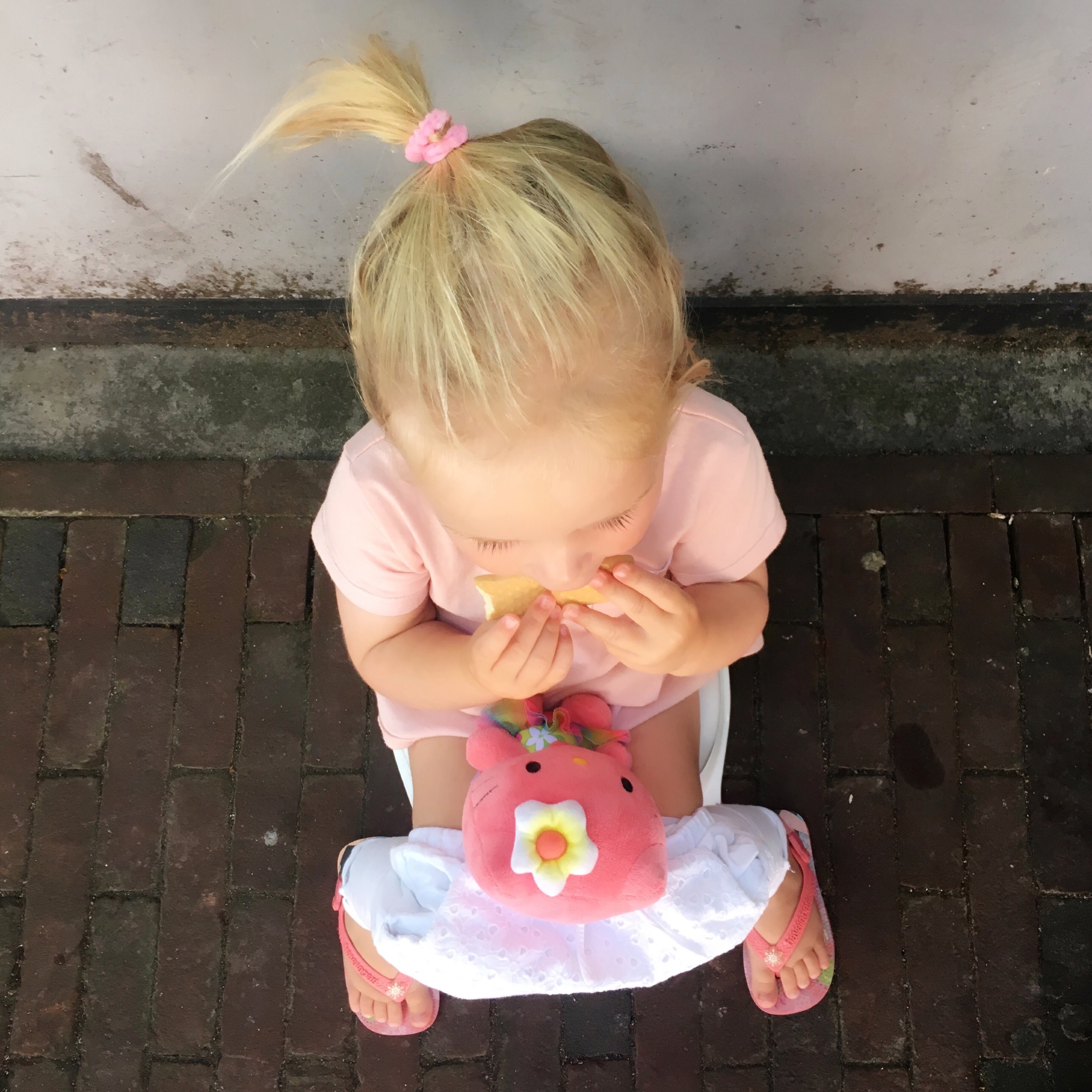We potty trained our daughter when she was 22 months old. It took us about three weeks. The first week and a half there were a lot of accidents. The week and a half after that the accidents disappeared and Aya was completely diaper free, apart from naps and nights. In this blogpost I am sharing what worked (and didn’t work) for us and any tips and tricks we have picked up along the way. If you want to know how we potty trained our daughter before her second birthday, then keep on reading!
The right time
Every child is different. Don’t push your child and yourself to potty train before your child is ready. Isaya was starting to get increasingly annoyed by her diaper changes, so that was our first cue. The second reason we figured 22 months was a good age was the fact that we were going on our family trip. Three weeks in Curacao, in the warmth, with very little clothes and a lot of free time, seemed like the perfect conditions to potty train. But don’t think you need to book a 5k holiday to the Caribbean in order for your child to pee on a potty! You can choose and create the right circumstances at home. For instance, if it’s cold where you live, wait until summer and preferably start getting serious when you have a couple of days off.
Get the goods
[easy-image-collage id=14598]There are a couple of things you need when you potty train your toddler.
- Potty
Preferably more than one. You don’t want to have to carry the potty up and down the stairs all the time. I would also advice one of the potties is a travel potty, because you are going to have to bring it everywhere you go. Also get a special child- toilet seat, for the transition from potty to toilet. Take your child to the store when you pick out the potty. Turn it into something fun. Explain several times what it means and highlight the fact that your child is “big” and you are so proud. - Underwear
Again, take your toddler along for the ride. Let them pick out the underwear and emphasize the “big girl/big boy, I’m so proud of you” part. Also, buy A LOT of underwear. I would advice you to start with the underwear immediately. We let Aya walk around in her bare bum the first two weeks (at home only obvs) which is why we needed the third week to help her get used to wearing underwear. - Rewards
Another good thing to pick out together. You are going to need a lot of little treats and presents to reward your toddler every time he/she goes potty. Try to find different rewards for peepee and poopoo, because number two is just a little bit harder to achieve. We started with stickers. When Aya lost interest in them we switched to mini smarties. - Towels and a bucket
There are going to be a lot of accidents in the first days. Be prepared for a lot of laundry. Because we were on holiday we were lucky enough not to have to do our own laundry, but we went through at least five or six towels a day. Also keep a bucket with water and soap ready to clean up after an accident.
Explain, Clean, Repeat
Apart from the potty, underwear, treats and towels you need a lot of patience. You are going to be explaining and repeating yourself a thousand times in the next couple of weeks. Don’t use just one sentence, but explain the concept in several ways, so you know your child will understand:
- “You are not wearing a diaper, so if you need to pee or poo, tell mommy”
- “Don’t forget to tell mommy if you need to pee”
- “This is the potty. Go sit on it if you need to pee or poo”
- “Don’t forget to sit on the potty!”
- “The potty is for peepee and poopoo.”
- “Do you need to pee? Come sit on the potty.”
- “You are a big girl/boy, so you are not wearing a diaper.”
- “You are wearing you big boy/girl pants. Don’t forget to go to the potty!”
You can start explaining the concept of the potty and the reward system by using a doll. Dolly goes potty, produces a peepee or poopoo and gets a reward. It will help your toddler understand the whole proces and consequences.
Also explain to your child the difference between wet and dry. Use a doll, wet its clothes, have them touch the wet clothes and then put on dry clothes and have them feel this again. When your toddler had an accident, don’t punish them by letting them walk around in their wet panties, but do let them feel for a bit that their underwear is wet and that this is an uncomfortable feeling.
You are going to be that person that runs after their toddler and asks them every five minutes if they need to pee or poo. Accept it. You are going to do it wherever you are, mid sentence, in the car, on your bike, in the supermarket. Pee and poo is what is on your mind. You are going to have to think and feel for your child’s body until they are able to do this for themselves.
Your child needs to adjust to the new situation (peeing in a potty) in every new situation and context. Maybe your toddler has mastered the potty at home, but they will forget once they arrive at the playground, daycare, grandma’s or the shops. So keep reminding them of the potty in every new situation and context.
Learn all the Cues
Your child is going to have it’s own words for the potty and for going peepee and poopoo. Learn all of these words. Tell everyone that takes care of your child these words. Also, look for other signals and cues. Things like standing on one leg, pulling “that face”, becoming quiet, withdrawing to a little corner, fidgeting, etc. Watch your kid like a hawk and react. You need to become an expert in your child’s toilet habits.
The first days we had a lot of accidents because we weren’t tuned into Aya’s potty needs yet. I would be standing in the kitchen, making a meal and Aya would say “mamamamamamamama” and I would distractedly say “yes sweetie, mama is cooking”. A few seconds later there would be pee all over the floor. She was trying to tell me, but because she didn’t have her words yet all she knew to do was say ‘mama’ when she needed to go potty.
Distract & Reward
[easy-image-collage id=14600]You are both going to spend a lot of time on the potty. So be sure your toddler has something to do. Things that helped Isaya stay put on the potty:
- A box full of interesting treasures
- A drawing book
- A bucket of water and some toys
- The iPad (Peppa Pig)
- Reading a book together
Reward your child every time they pee or poo on the potty. Use the little treats but also use your words. At first you are going to be extremely excited and it will be quite easy to scream “yeaaaaaaah good girl!! I’m so proud of you! You did a peepee on the potty! You did such a good job! Mama is so proud. You are such a big girl! Look, a peepee in the potty! Let’s throw it away together! Bye bye peepee! Good girl!” After a week or so you are going to have to fake it. Fake it.
We didn’t use punishment because we prefer positive affirmation and didn’t want to put too much pressure on Aya. But after an accident we did take the time to say things like: “O nooooo! The peepee is on the floor! It needs to be in the potty! Now you have wet undies. Do you feel that? Aya needs to tell mama when she has to go potty! O nooo…! Next time…” etc.
Everywhere you go
[easy-image-collage id=14601]After a couple of days, when the accidents have subsided your toddler is ready to venture outside without a diaper. This means the potty is your new handbag. You are bringing it everywhere you go. There are very convenient travel potties available for this purpose. Don’t worry about people staring at you when your toddler needs to pee in the middle of the street. Nobody cares.
Easy does it
[easy-image-collage id=14602]Your child is learning something MAJOR. Potty training is such a big step in the development of a child. They are getting control over their body. They are learning about sensations in their body. It is huge! So go easy on them. They may relapse in other areas of development (lousy eating, waking up at night, whining) while they are potty training. But that’s just temporary. They get to have that when they are getting this potty thing under control.
Also, don’t push it. If your child is extremely resistant to the potty and you’ve tried luring them to it with treats and distractions for a week or two and it’s just not working, maybe your toddler just isn’t ready. Maybe they are learning something else at the moment. Maybe they need some more time. Don’t stress it. Put the potty away and try again after a couple of weeks.
Good Example
Other kids can be a great help in the proces of potty training. If your child is reluctant to go on the potty it may help for them to see another toddler go peepee on the potty. They will want to copy it. They will also see that it’s nothing scary and that the other kid is being rewarded and celebrated for their potty behavior.
The other way around can also help. If your child can show a friend or family member “how big they are” and “how good they can go potty” and receive the proper acclaim, they will feel even more affirmed in their accomplishment!
Good Luck!



4 thoughts on “How we Potty Trained our Daughter Before her Second Birthday”